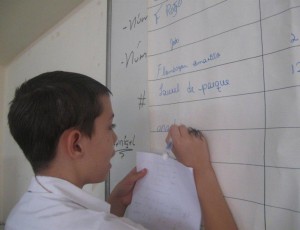Important Links
(Photo © Cuban Natural History Museum) (Photo © Cuban Natural History Museum)
(Photo © Cuban Natural History Museum)
(Photo © Cuban Natural History Museum) (Photo © Cuban Natural History Museum)
The results obtained by the children motivated a discussion of the importance of the trees that are used by the Yellow-bellied Sapsucker, as well as those that were not. The possibility to continue studying other parks in the area was also emphasized. An agreement was made from this investigation at La Maestranza Park to conduct future research in other parks by following the footsteps of the Yellow-bellied Sapsucker.
By: Ivan Borroto and Xochitl Ayon
 Photo ©
Cuban Natural History Museum
Photo ©
Cuban Natural History Museum




